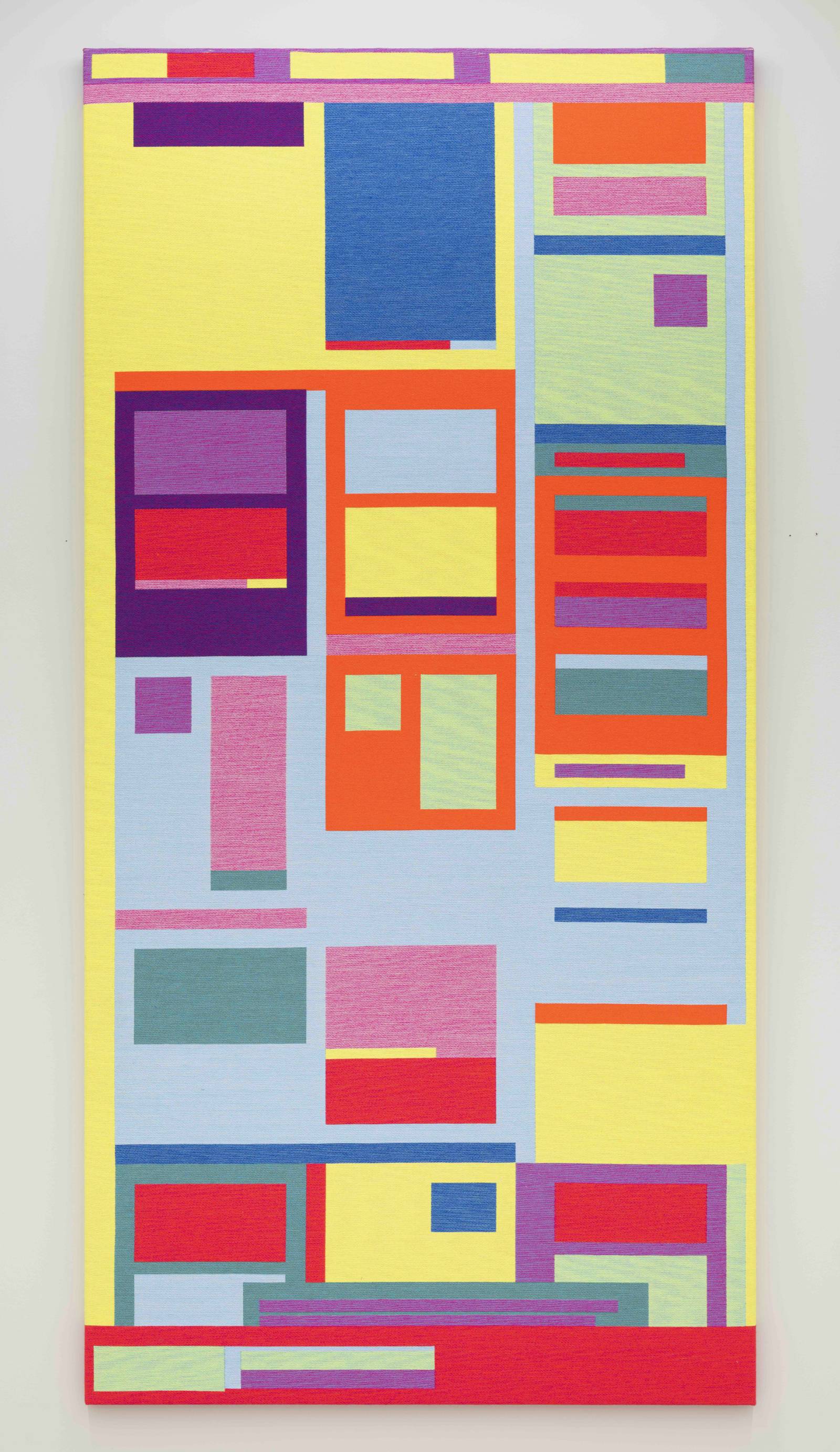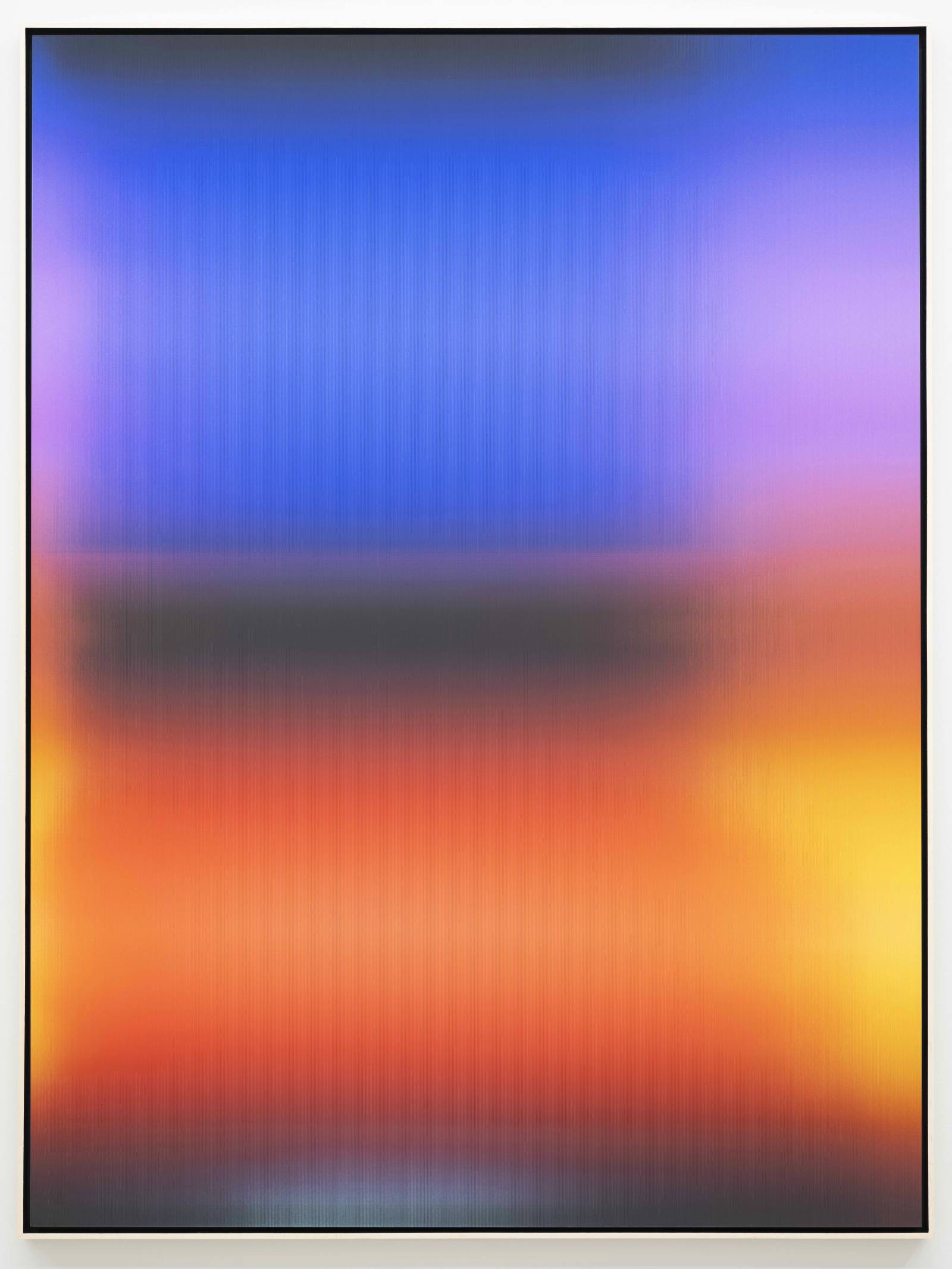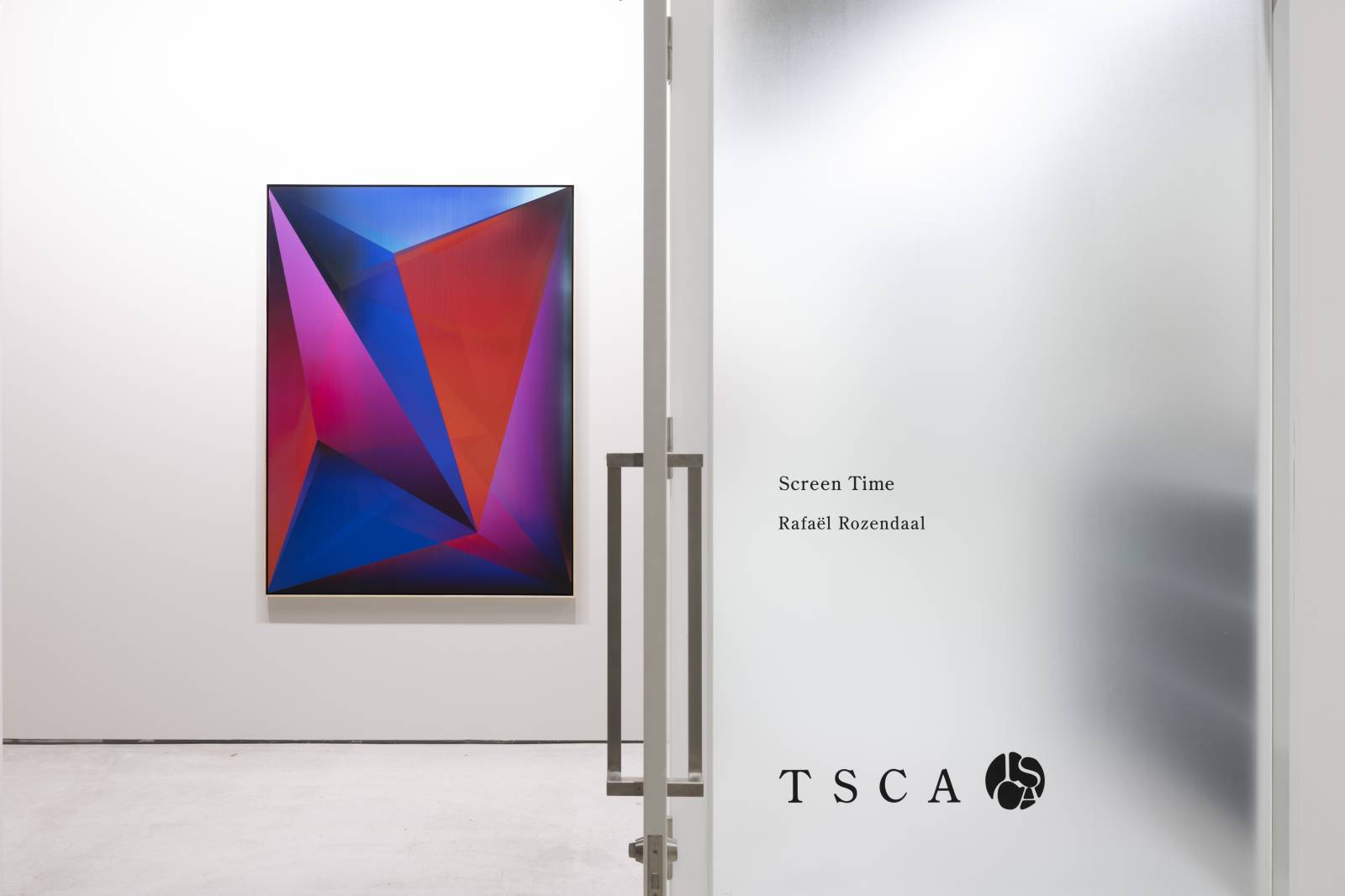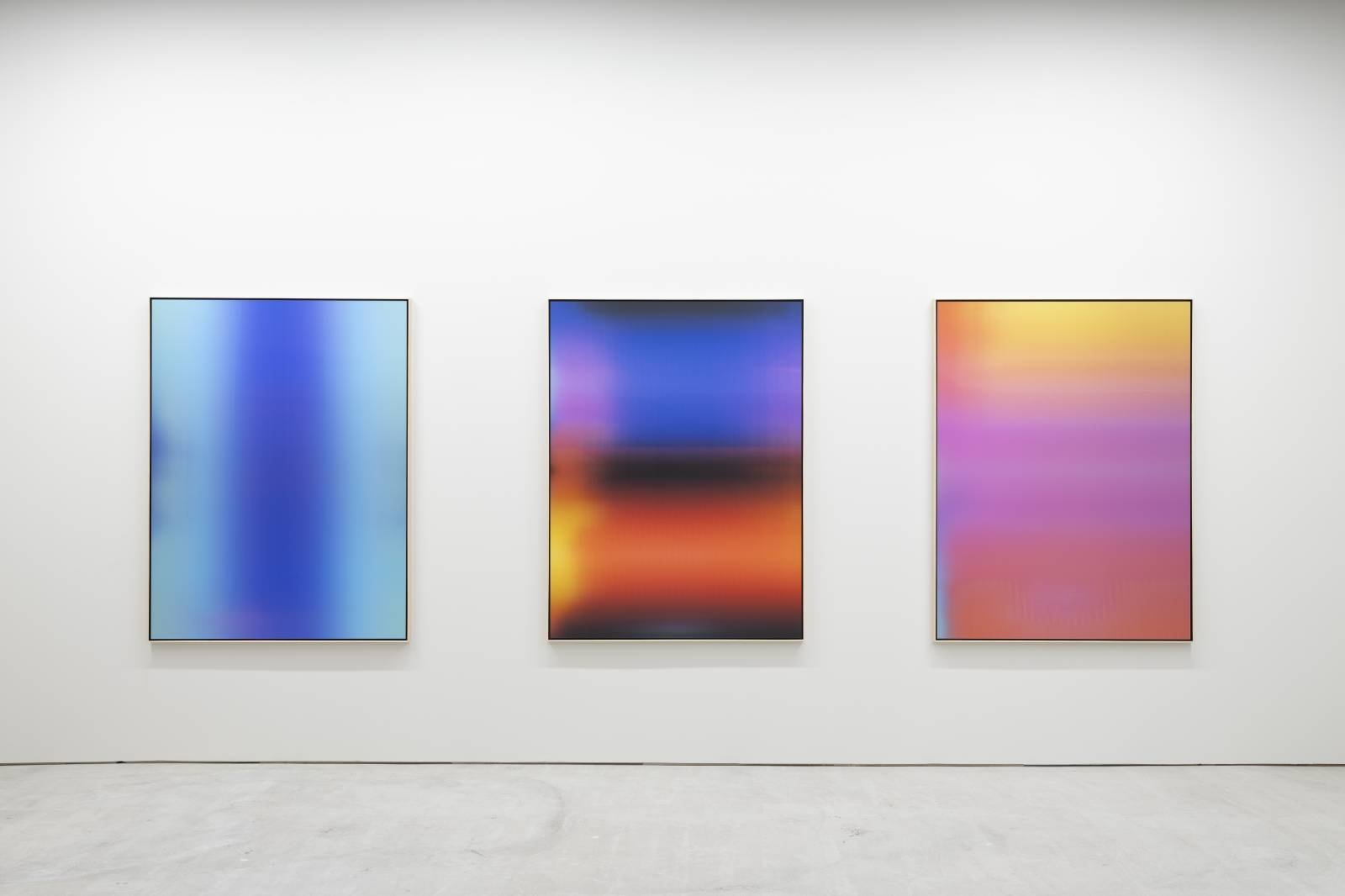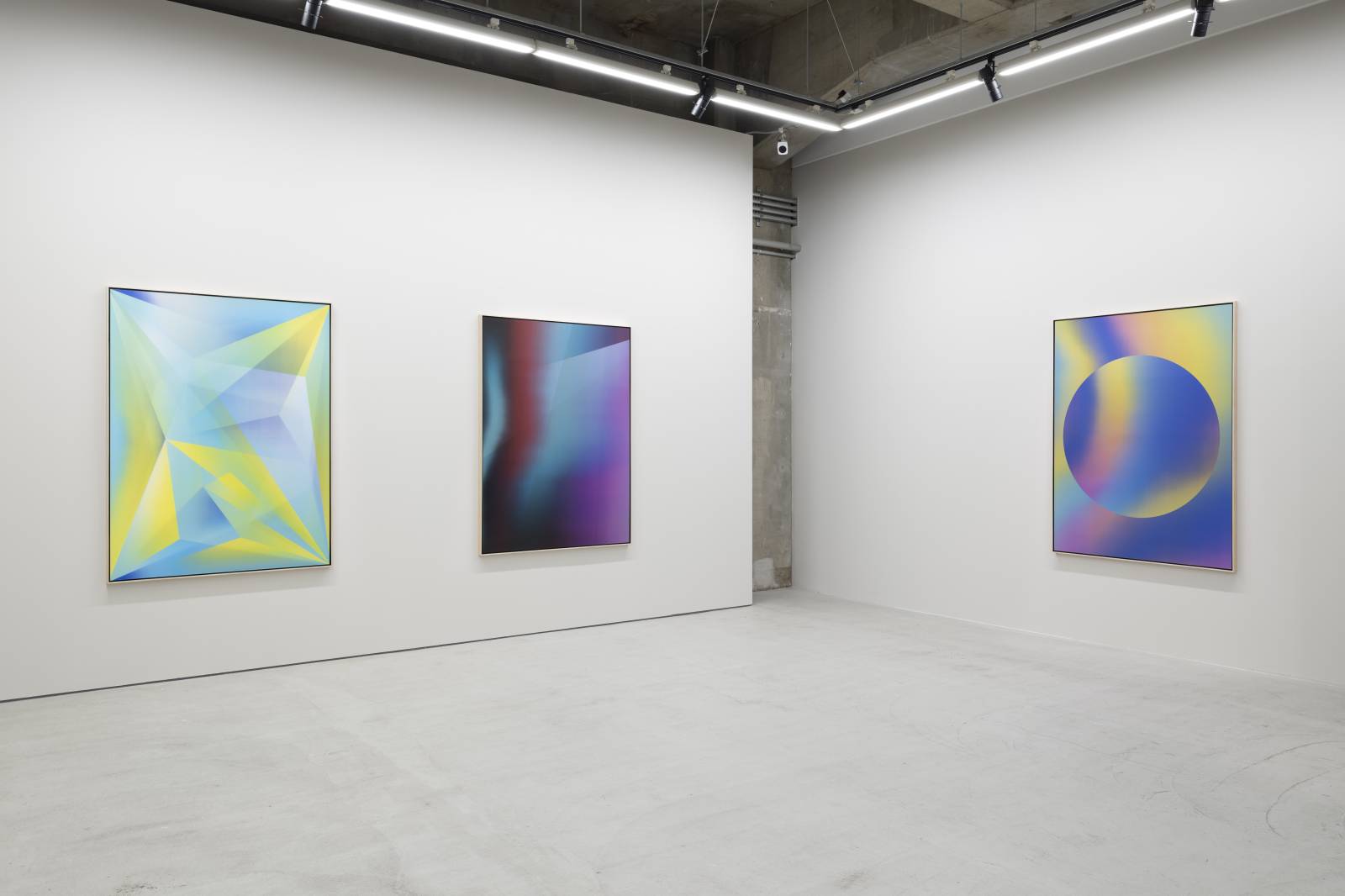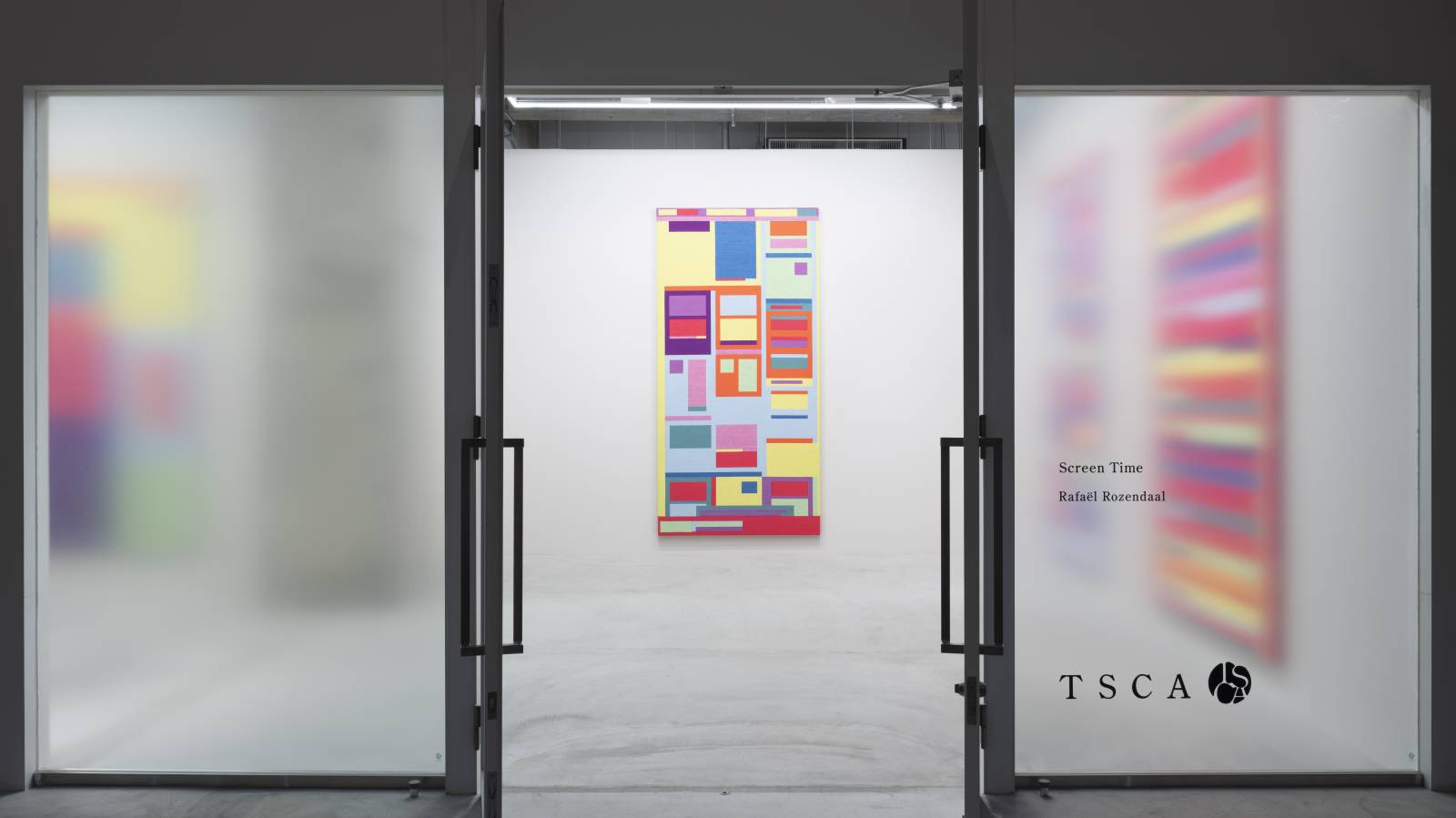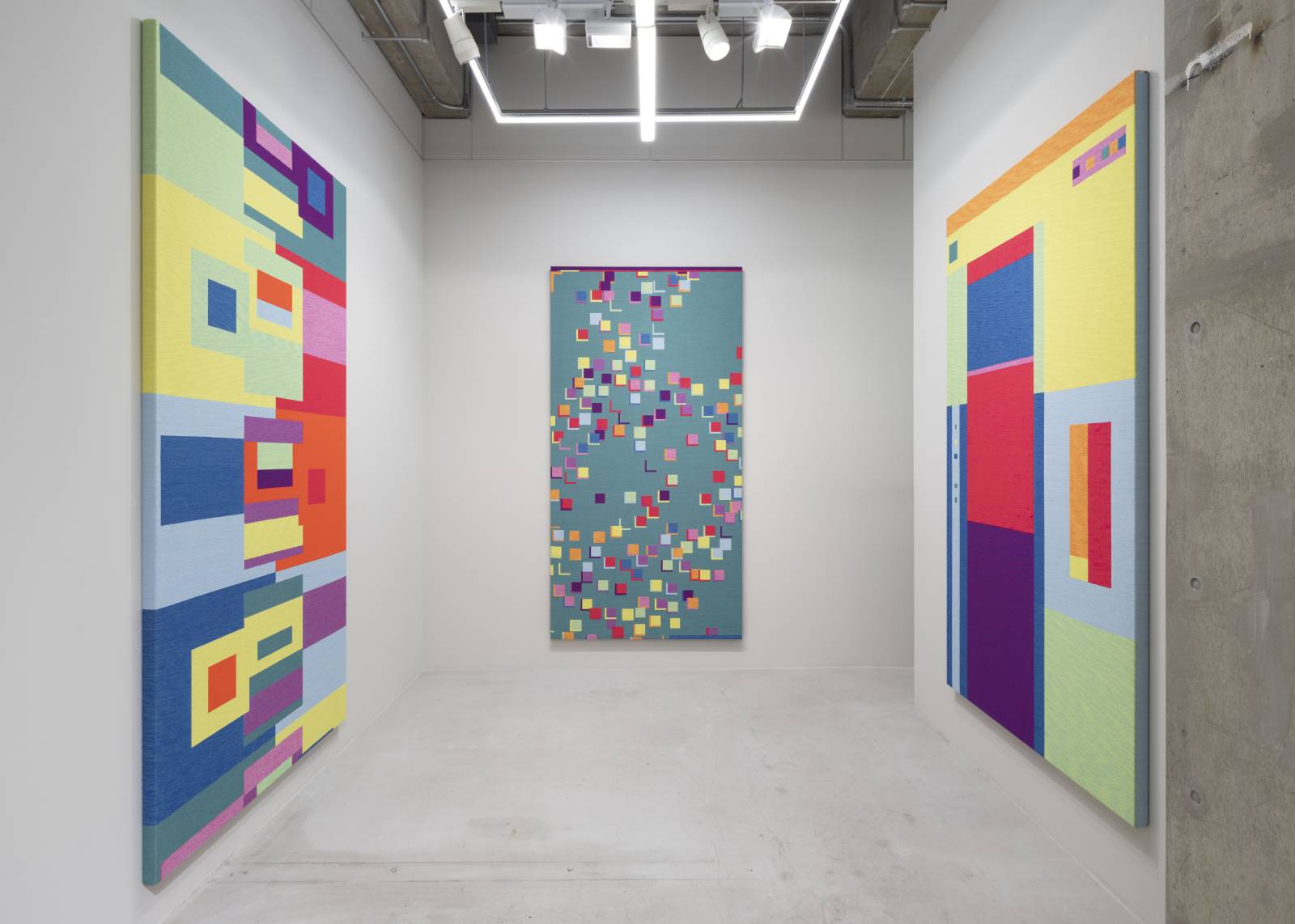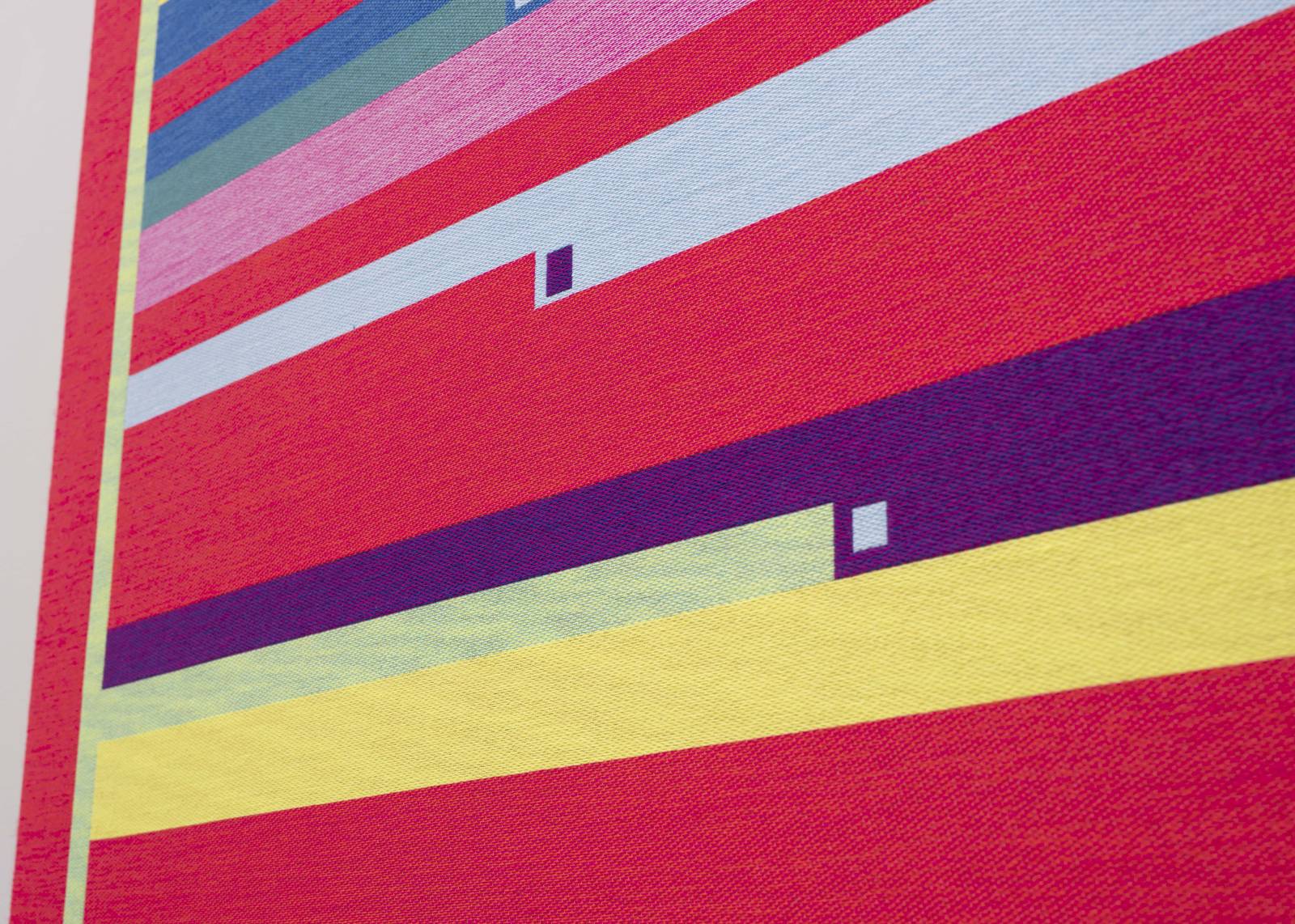Takuro Someya Contemporary Art is pleased to present Screen Time, an exhibition by Rafaël Rozendaal opening on Saturday, November 26th.
Screen Time comprises two ongoing series of works: Into Time, a series of lenticular paintings, and Abstract Browsing, a series of jacquard tapestries. This exhibition marks the first time that new works in these series have been presented at TSCA since Somewhere (2016) and Convenient (2017), respectively.
As hinted by the title of this exhibition, both Into Time and Abstract Browsing are explorations into the nature of time in its various forms.
Rozendaal has remarked in interviews and writings that the “landscapes” we most often encounter in our contemporary society are seen through the “window” of a screen on our electronic devices rather than an actual window in space. In the context of the history of humans and landscapes, we have shifted from the time when people looked out into the world through physical windows to the time when families gathered around the television set to watch moving images. And now, in this present moment, we have grown accustomed to spending our time on the individual screens of our personal devices, consuming our favorite content when and where we please. If one were to name these different periods on the basis of their visual cultures, perhaps “screen time” would be a fitting one for this most recent iteration. As the title of this exhibition, Screen Time evokes the expanse of time in which the continuum of visual culture is developing.
For artists attempting to face the questions posed by our contemporary aesthetics, Rozendaal has long been a pioneering figure. Abstract Browsing is a series of jacquard tapestries based on images of abstracted websites, which are created by “abstract browsing.net,” a browser plug-in developed by the artist in 2014. The tool, available for free on Google Chrome, abstracts all information present on a webpage into geometric units of bright colors. Rozendaal runs this program daily on well-known websites ranging from newspapers to real estate listings, generating thousands of images. From those, he selects compositions that appear striking or unusual in some way to create as paintings through the medium of jacquard weaving. The jacquard loom is an early prototype of the computer; as such, the textile it produces can be understood as both a digital image and a mechanically produced material. With this choice of medium, Rozendaal draws out the connection between digital images and traditional manufacturing techniques to highlight that, far from being a new media, the “digital” has a long history.
The new tapestries presented in this exhibition are all the same width but vary in height, with some of the tallest approaching three meters. Their exaggerated dimensions recall the vertical format of scrolling through the web on our phones. In this way, these works emphasize the shared verticality of web browsers and the weaving process, in which the fabric takes shape one row at a time. In recent years, however, it has also become possible to take screenshots of entire web pages. Unlike the experience of scrolling and taking in text and information slowly, the screenshot transforms the website into an image that can be seen in its entirety in a much shorter span of time. This is also in stark contrast to the slow unfolding of time that is inherent to the process of creating a tapestry. In these ways, the various textures of time that exist within the screen as a tapestry and among the many other screens that make up our daily lives are interwoven into the tapestries presented here.
Into Time is a series of lenticular paintings that departs from the traditional concept of painting in that they cannot be experienced instantaneously but must be seen over a duration of time. Some of the works in this series are based on the geometric patterns and color gradations generated through Rozendaal’s website works, intotime.us, intotime.com, and intotime.org.
Rozendaal’s lenticular paintings contain time within them, and as such, it is only by moving our bodies around these works that we can experience them in their entirety. The surface of a lenticular painting functions similarly to that of a screen such as an RGB monitor or an image cast by a projector. But whereas monitors and projectors are media that display images standing in for physical “landscapes” as they change to and fro, the nature of the lenticular medium is such that it becomes the shifting image itself. And just as an actual landscape contains an infinity of views that depend on the position of the viewer, so too does the lenticular. The new lenticular paintings presented in Screen Time reflect the ongoing development of Rozendaal’s sense of colors and their combinations.
Both the jacquard tapestry and the lenticular print are materials with long histories. By selecting them as his media, Rozendaal draws our attention to the largely unknown connection between such traditional techniques and the digital devices and technologies with which he makes images, enabling us to understand these seemingly disjointed elements as points along the continuum of our visual culture. This exhibition, and Rozendaal’s artistic practice as a whole, hints at the diversity of time in its many forms. The expanded scale of Rozendaal’s newest work draws us into a new moment following the many disruptions brought about by the pandemic as well as the rise of NFTs, allowing us again to enjoy the experience of standing before a physical work and letting the time pass us by.
[Exhibition Details]
Rafaël Rozendaal|Screen Time
Exhibition Period: Saturday, November 26, 2022 – Saturday, December 24, 2022
Open: Tues – Sat 11:00 a.m. – 6:00 p.m.
Closed: Sun, Mon, and National Holidays
Location: Takuro Someya Contemporary Art
TSCA 3F TERRADA Art Complex I 1-33-10 Higashi-Shinagawa Shinagawa-ku Tokyo 140-0002
TEL 03-6712-9887 |FAX 03-4578-0318 |E-MAIL: gallery@tsca.jp


